Northern Renaissance Art
1/29
There's no tags or description
Looks like no tags are added yet.
Name | Mastery | Learn | Test | Matching | Spaced |
|---|
No study sessions yet.
30 Terms
“The Very Rich Hours of the Duke of Berry”
“February”, FLEMISH RENAISSANCE, 1416
manuscript illustration
describes how pilgrims lived
stacked spaces
reverse perspective
(inventory of tasks)
microcosm world view —> focus on object details
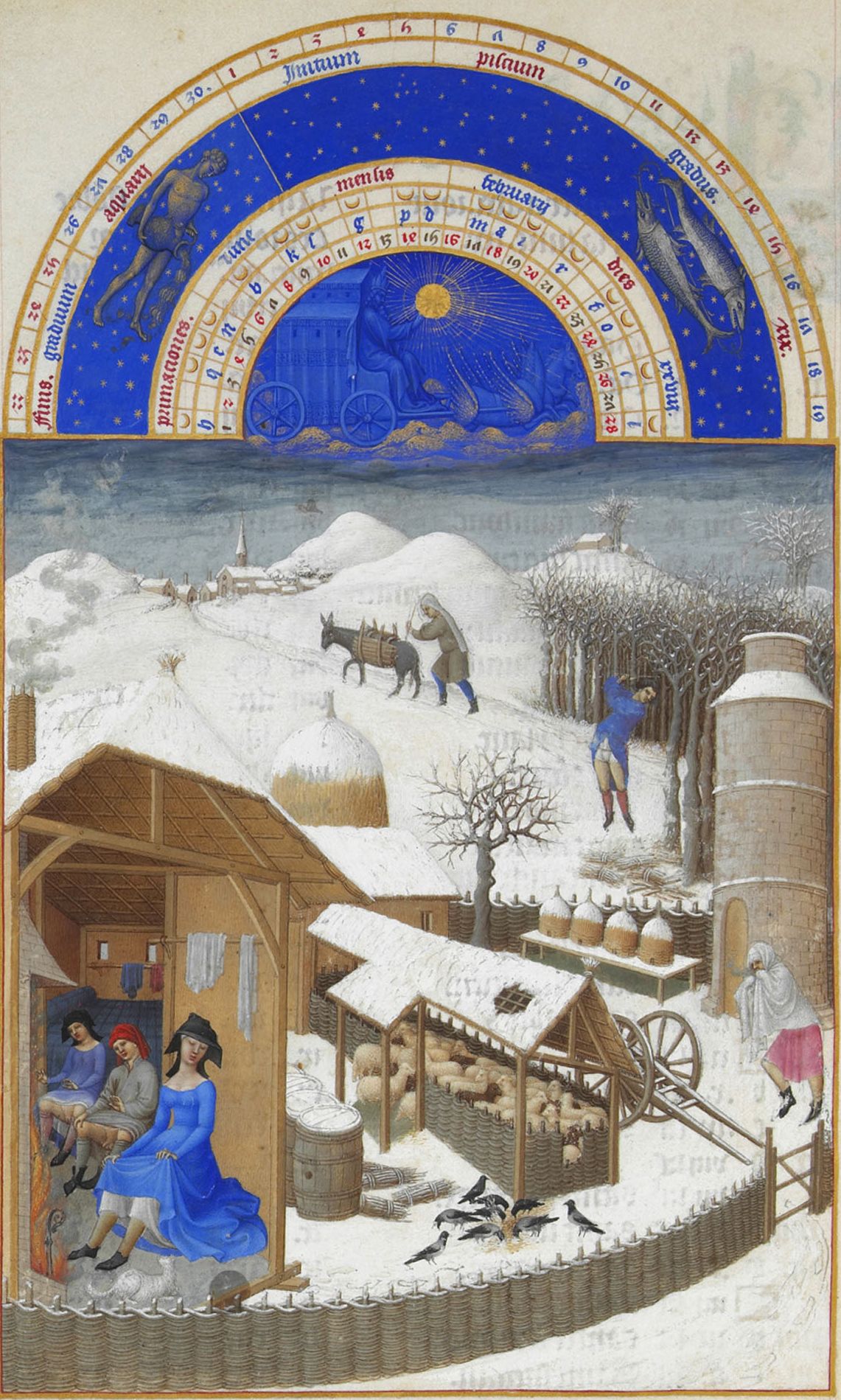
“Merode Altarpiece”: “Annunciation of Mary”
FLEMISH RENAISSANCE, Robert Campin, 1428
no interactions, no human dramatics
microscopic focus on objects = symbols
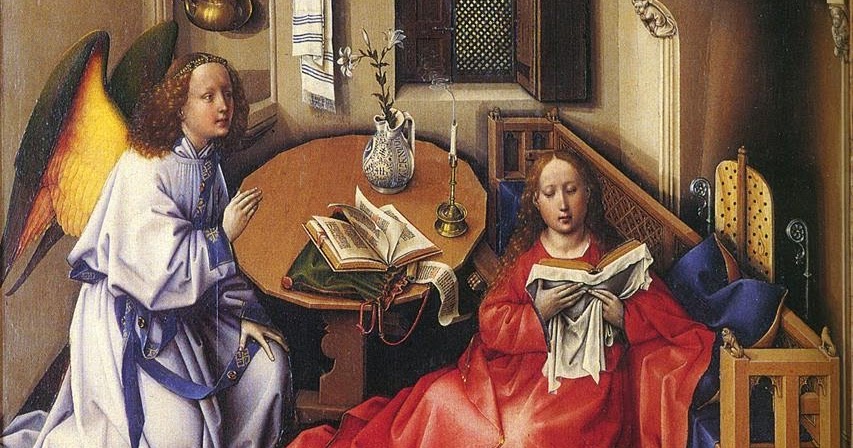
“Merode Altarpiece”: “Joseph in Carpenter’s Shop”
FLEMISH RENAISSANCE, Robert Campin, 1428
anachronism —> out of time period
symbols of Christ + crucifixion
Christ’s death is mouse trap
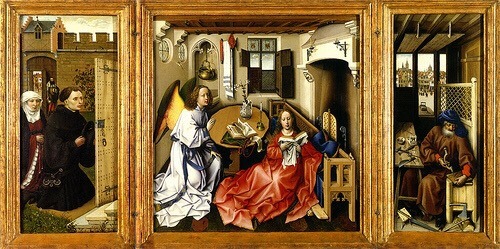
“The Ghent Altarpiece”: “Adam” and “Eve”
FLEMISH RENAISSANCE, Jan van Eyck, Hubert van Eyck, 1432
open and closed and played music
life sized figures
fig leaf —> symbol
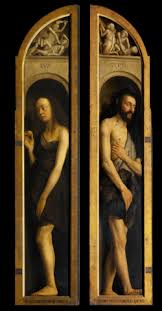
“The Ghent Altarpiece”: “God the Father”
FLEMISH RENAISSANCE, Jan van Eyck, Hubert van Eyck, 1432
details of materials
celestial crown and terrestrial crown
oil paint allows detail [Jan van Eyck]
![<p>FLEMISH RENAISSANCE, Jan van Eyck, Hubert van Eyck, 1432</p><ul><li><p>details of materials</p></li><li><p>celestial crown and terrestrial crown</p></li><li><p>oil paint allows detail [Jan van Eyck]</p></li></ul><p></p>](https://knowt-user-attachments.s3.amazonaws.com/d6b6a36f-233d-4ca3-a665-5b9193cd1e4c.jpg)
“Amolfini Wedding Portrait”
FLEMISH RENAISSANCE, Jan van Eyck,1434
marriage document
convex mirror with image reflected as artist reflected as a witness
symbolism —> removing shoes, swollen belly, catholic, fertility, fidelity

“The Portionari Altarpiece”: “The Adoration of the Shepherds”
FLEMISH RENAISSANCE, Hugo van der Goes,1476
anachronism (15th Flemish City)
Renaissance clothing
symbol —> classifying angels
shepherds —> reverse perspective
wheel spoke perspective —> arrangement of figures in a circular pattern directed towards the center
still-life symbols
repetition of colors
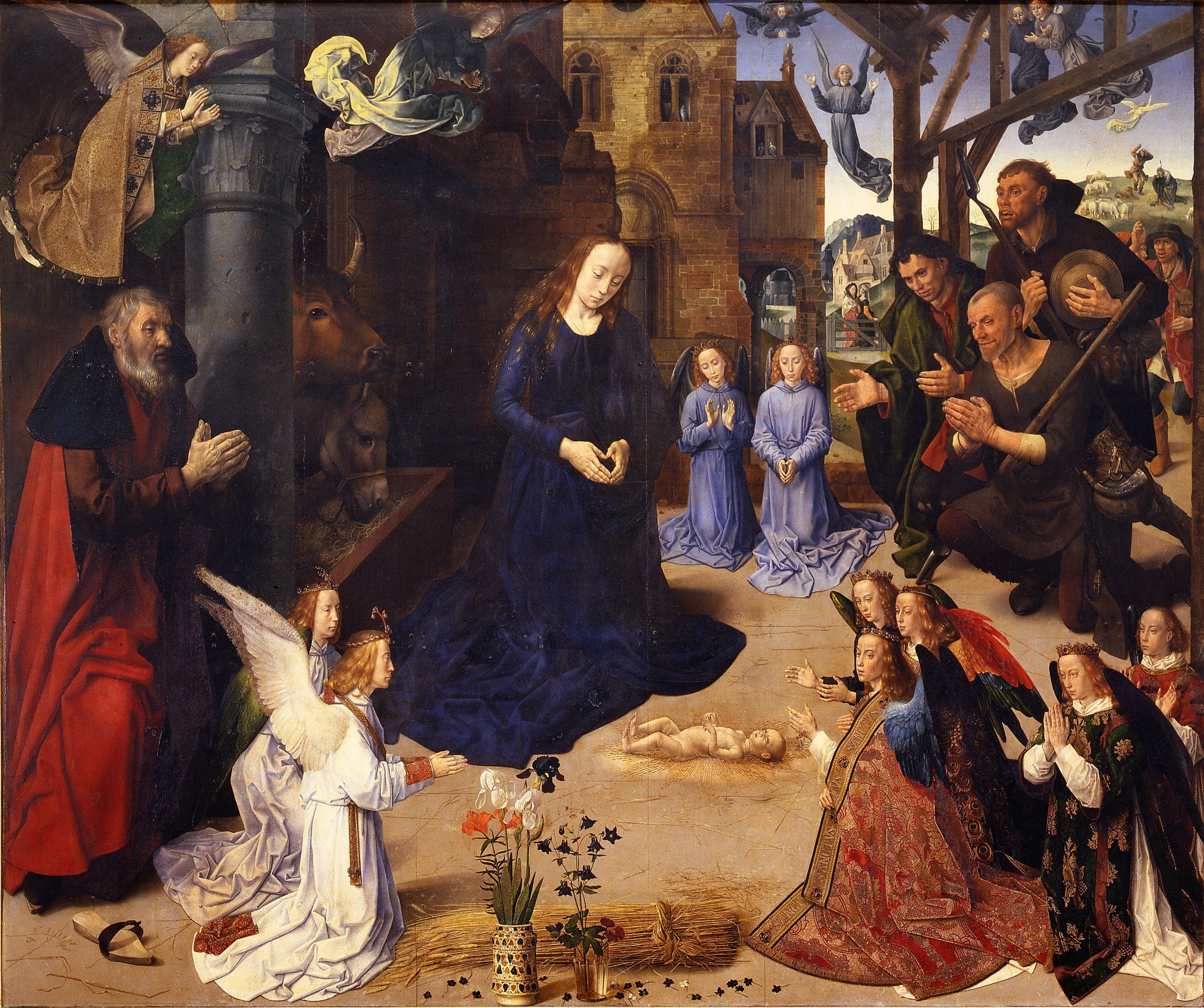
“The Garden of Earthly Delights”: “Creation of Eve”
FLEMISH RENAISSANCE, Hieronymus Bosh,1510
Symbolism of Adamites
regain Adams innocence
Adamite symbolism
“phallic tree” —> sin in symbols
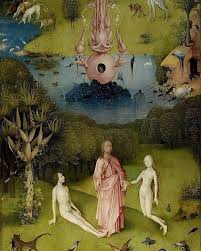
“The Garden of Earthly Delights”: “Garden”
FLEMISH RENAISSANCE, Hieronymus Bosh,1510
mechanical “human creation.”
nude figures, giant fruit, bizarre hybrid creatures
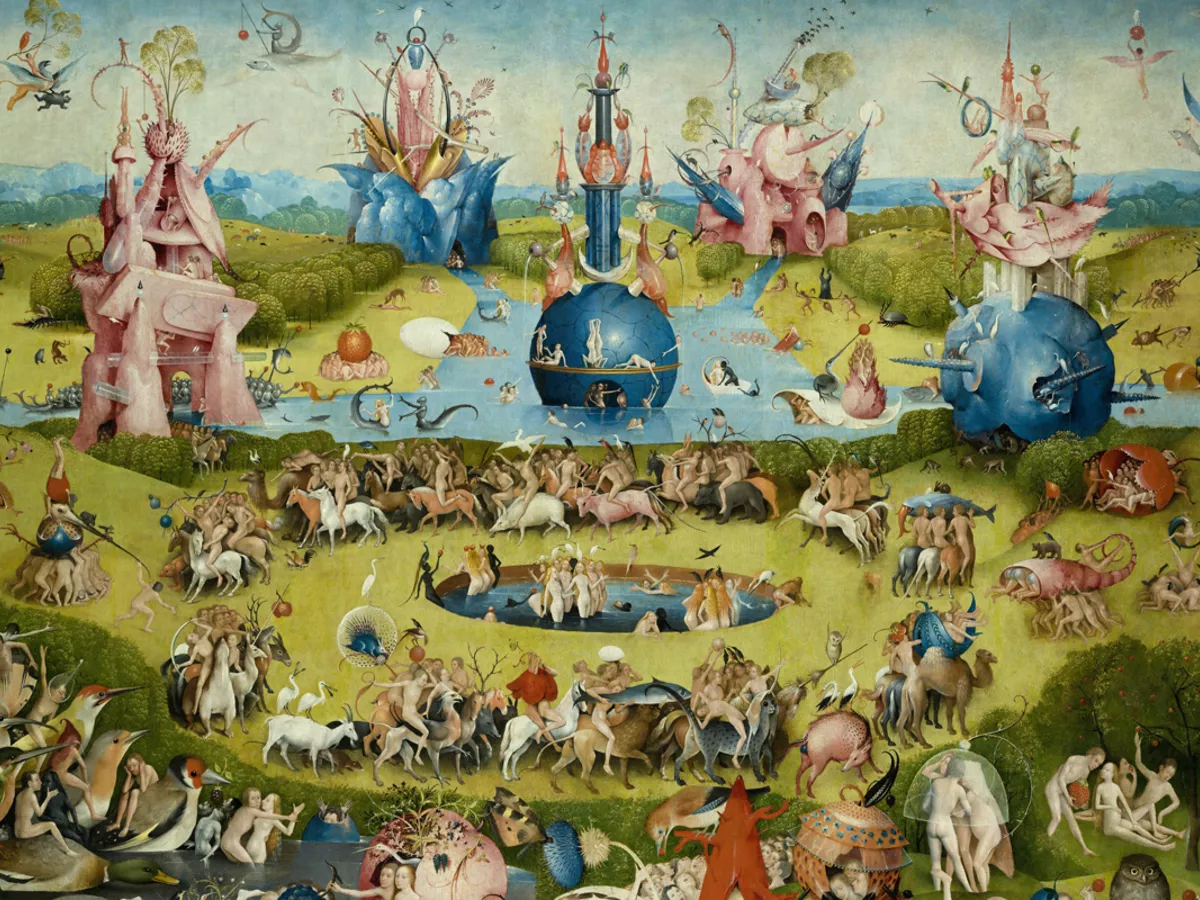
“The Garden of Earthly Delights”: “Hell”
FLEMISH RENAISSANCE, Hieronymus Bosh,1510
results of Hell
portraits of Bosh
Alchemical references: purification through fire
Alchemical references: beaker purification of flood
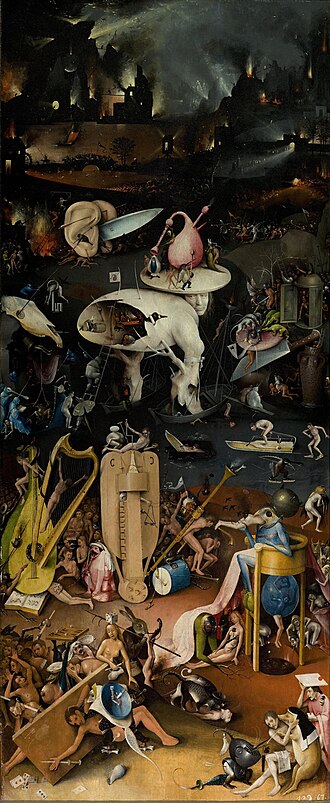
“Self-Portrait”
GERMAN RENAISSANCE, Albert Dürer,1526
Chiliasm—> anticipation of the end of the world (predicted for 1500)
Anachronism —> connecting time periods
makes permanent his youth
oil paint, surfaces, and details
chiaroscuro
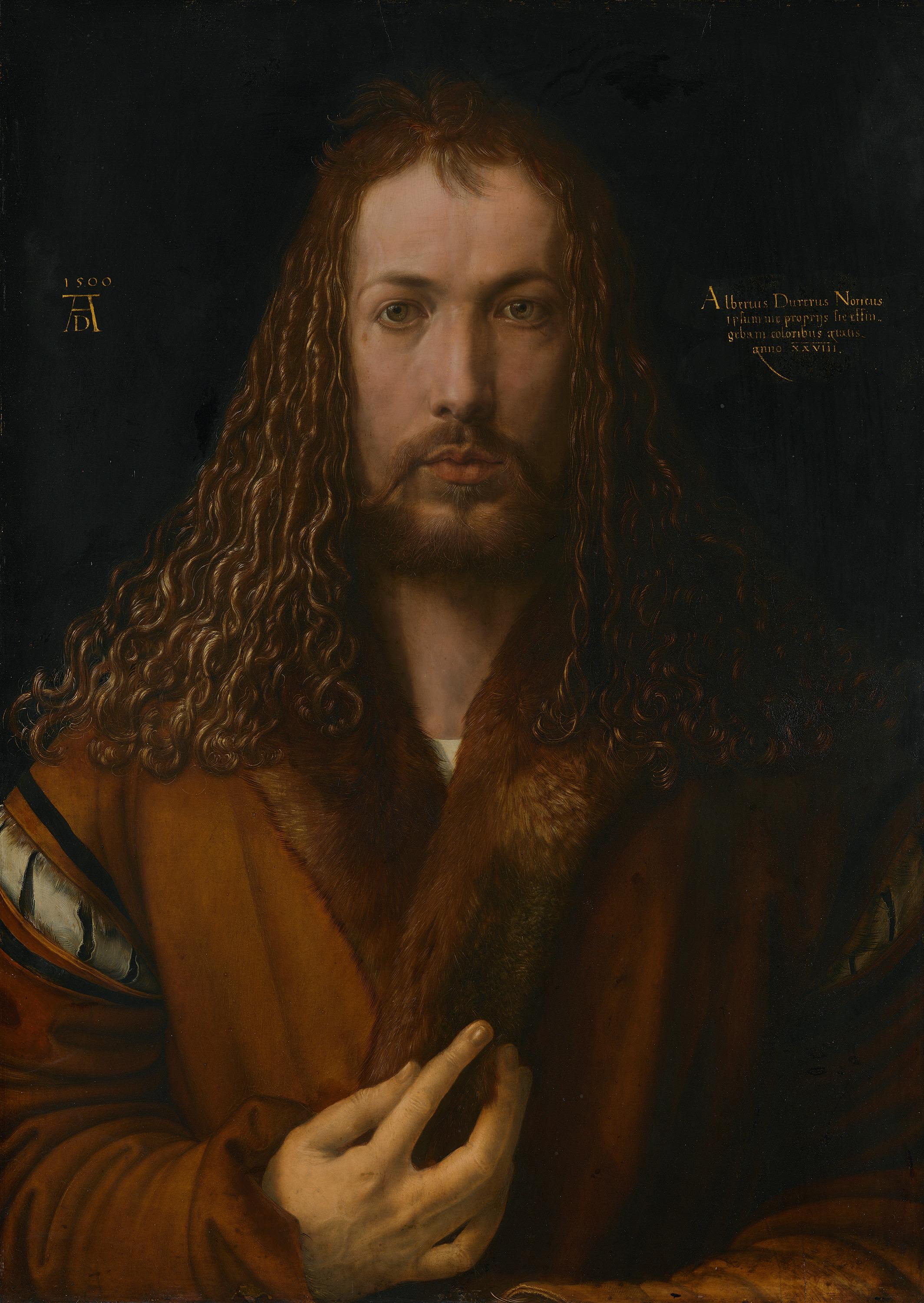
“The Fall of Man”: “Adam and Eve”
GERMAN RENAISSANCE, Albert Dürer,1504
“The humor” —> bodily fluids associated with different human personalities symbolically
animal —> personalities
psychopomp —> spirit carrier
chiaroscuro
contrapposto poses
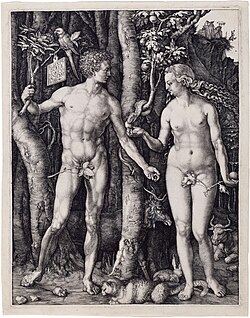
“French Ambassadors”
GERMAN RENAISSANCE, Hans Holbein,1533
symbolizes politics
symbolized the clergy, the church
symbols of divine vs. earthly
Rome is at the center
Protestants vs. Catholicism
“anamorph” —> distorted image
planimetric separation
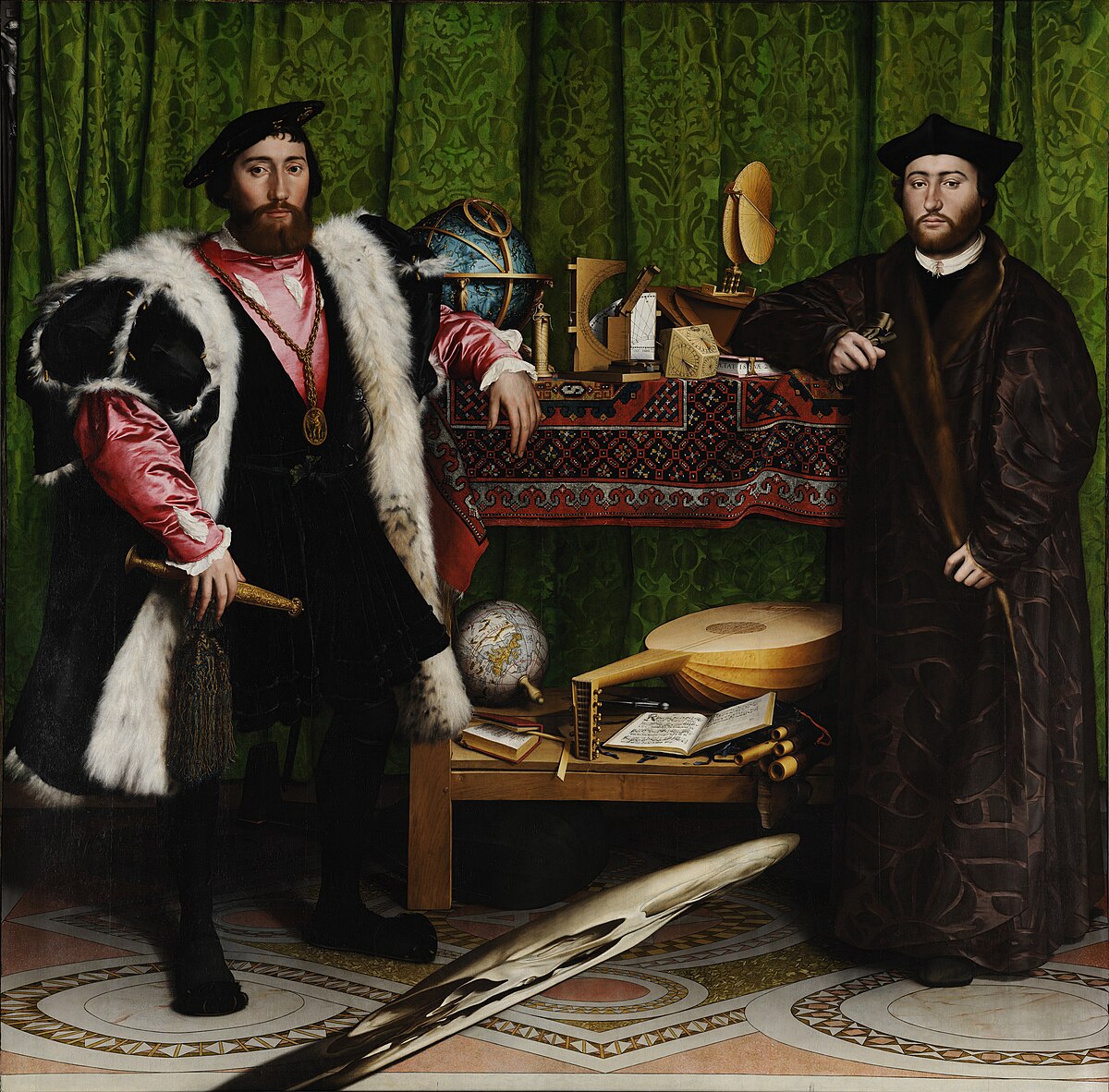
Flemish Renaissance Art
microcosm (objects, surfaces, details)
emphasis on symbolism
oil paint [Jan van Eyck]
German Renaissance Art
microcosm + macrocosm
details (symbolism) + concave space, convex forms
perspective systems
calendar pages
Illustrated pages from Books of Hours or liturgical calendars that depict the labors of the months and zodiac signs (especially by Flemish)
Northern Renaissance vs. Italian Renaissance (Humanism, Neoplatonism)
Northern Renaissance: meticulous detail, empirical observation, and symbolism embedded in everyday objects
more interested in Christian humanism
German + Flemish
Northern Renaissance vs. Italian Renaissance (Humanism, Neoplatonism)
Italian Renaissance: Centered on classical antiquity, idealized proportion, and linear perspective
Humanism emphasized reviving Greco-Roman texts
Strong influence of Neoplatonism, which connected physical beauty to spiritual truth and saw earthly forms as reflections of divine ideals.
microcosm
The human being as a small-scale reflection of the larger universe
details, symbols, objects
Macrocosm
The cosmos is a vast version of the human body or moral order
perspectives systems
altarpiece
A multi-panel or single-panel artwork placed behind or above a church altar
Triptych
A three-panel altarpiece with two wings that open and close
common with flemish
oil paint
A medium perfected in the Northern Renaissance
fine details
texture
slow drying time, lots of layers
invented by [Jan van Eyck]
wheel spoke perspective
arrangement of figures in a circular pattern directed towards the center
common with Flemish
Adamites
A radical religious sect that sought to return to the innocence of Adam and Eve
Alchemy: purification process
More than proto-chemistry, alchemy was a spiritual metaphor
inner purification, salvation, transformation
chiliasm
imminent arrival of a thousand-year kingdom of Christ
apocalyptic imagery —> German Renaissance like Durer
Humours: melancholic, choleric, sanguine, phlegmatic
A pre-modern theory that human temperament comes from four bodily fluids
psychopomp
A figure who leads souls to the afterlife
spirit carreir
anamorph
A distorted image that appears correct only from a specific viewpoint or with a mirror/lens